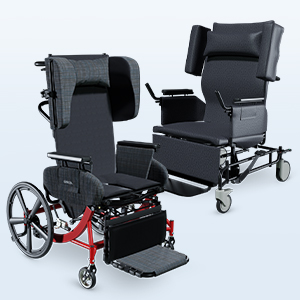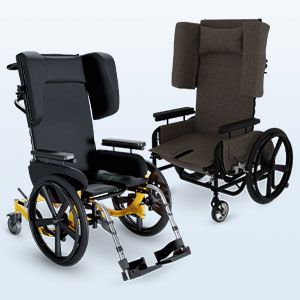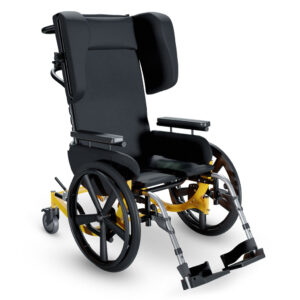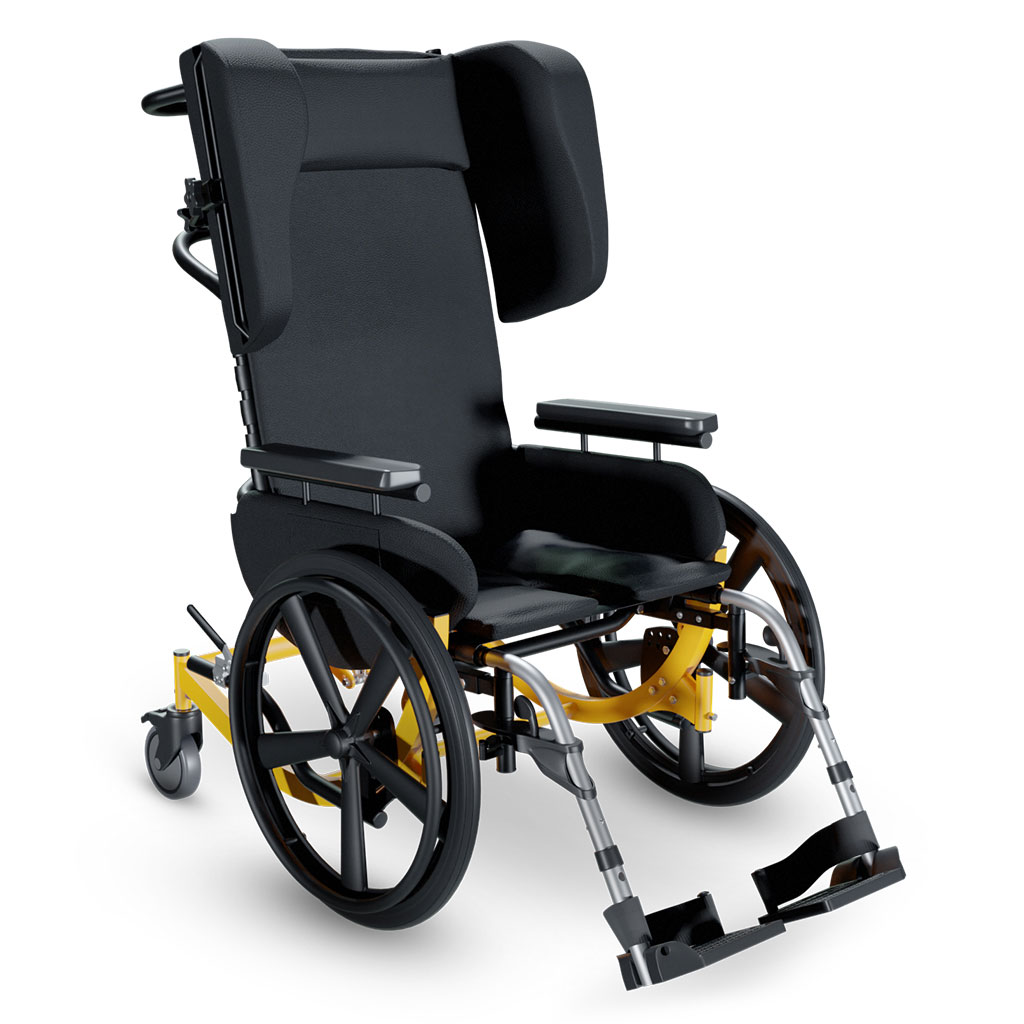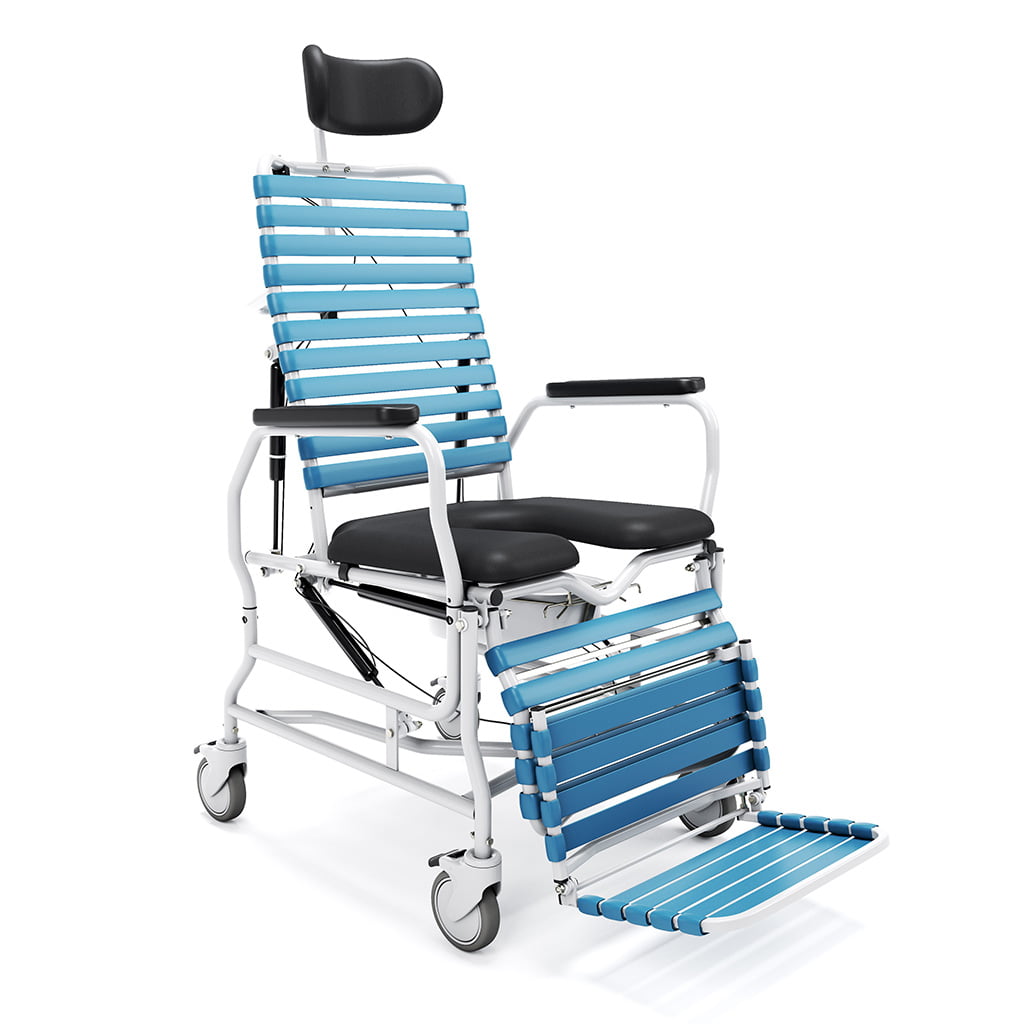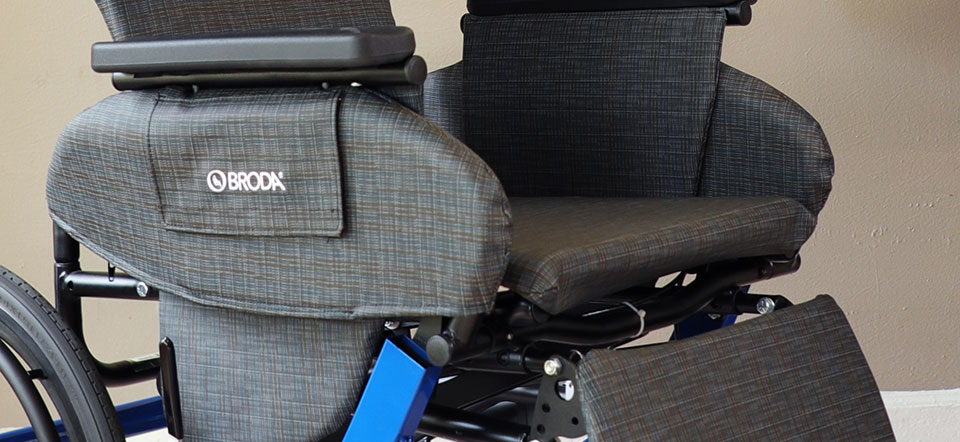Choosing the right wheelchair in a long-term care setting is one of the most critical decisions for a resident’s quality of life. The proper equipment goes far beyond simple mobility; it impacts posture, fall risk, comfort, skin integrity, and overall well-being. Selecting the ideal wheelchair is a commitment to preserving the health and dignity of the people who depend on them every day.
This guide will explore the best wheelchair types for long-term care environments, helping you make an informed choice for your residents and facility. We will cover essential categories like positioning and mobility wheelchairs, highlight must-haves and pitfalls to avoid, and introduce you to some of the most reliable and beneficial solutions from Broda.
Essential Wheelchair Types for Long-Term Care
Not all wheelchairs are equally beneficial for helping residents enjoy time out of bed. In a long-term care facility, the focus must be on providing support that adapts to the individual’s needs. Here are the most important categories to consider.
Positioning Wheelchairs
For residents who spend significant time in their wheelchairs, proper positioning is paramount. Individuals with fragile skin, low muscle tone, or pressure injury risk will require a more advanced solution than a Geri chair or high-back recliner. Positioning wheelchairs are specifically designed to provide exceptional support and comfort while helping to prevent common health complications like pressure injuries and postural deviations. These wheelchairs offer adjustable features that allow caregivers to customize the fit for each user.
The key benefit of a positioning wheelchair is its ability to redistribute pressure away from vulnerable areas, increasing sitting tolerance and time spent out of bed. Features like adjustable seat tilt and back recline work together to shift the resident’s weight, promoting blood flow and protecting skin integrity. This proactive approach to seating is fundamental to high-quality care.
Look For:
- Front-pivot seat tilt
- Up to 90º of back recline
- Comfortable seating surfaces
- Removable arm rests for easy transfers
Avoid:
- Geri chairs and other medical furniture
- Sling-seats and low-quality strapped seats
- Reclining wheelchairs with no tilt functionality
- Slippery or unstable seating surfaces

Mobility Wheelchairs
Mobility is a cornerstone of independence and mental well-being. Mobility wheelchairs are designed to encourage self-propulsion. When a resident can move independently, it empowers them and provides valuable physical activity.
A quality mobility wheelchair should be ergonomic and well-built for safety and stability. For residents who can use their feet to propel themselves, a wheelchair with a low seat-to-floor height can revolutionize their daily experience, allowing them to engage with their environment and maintain a sense of autonomy.
A front-pivot seat tilt is essential for mobility wheelchairs. When the tilting point is located at the front of the wheelchair, the individual is lowered closer to the floor and can more easily reach wheel rims or the floor for self-propulsion. By contrast, with a rear-pivot seat tilt, the user’s legs and lap are raised to achieve the tilted position. In this configuration, the resident’s feet will no longer touch the floor, and their gaze will be pointed at the ceiling, inhibiting mobility.
Look For:
- Front-pivot seat tilt
- Low seat surface height for easy heel strike
- Wheels with hand rims
- A comfortable seat requiring minimal cushions
Avoid:
- Rear-pivot seat tilt
- Foldable wheelchairs with sling seats
- Using too many cushions
Shower Commodes
Hygiene is a vital aspect of care, and the right equipment can make bathing a safer and more dignified experience. A professional shower commode is engineered to provide stability, comfort, and security in wet environments. Shower commodes are essential to not only bathing, but also bowel programs and routine skin integrity assessments. The right equipment makes these activities more comfortable and dignified for residents and safer and more convenient for staff.
For residents at high risk for pressure injuries, look for shower commodes with features like adjustable tilt and back recline. These elements not only protect the resident from falls but also make the caregiving process more manageable and efficient for staff. For residents who are able to sit upright comfortably, a more basic model may be a good choice, but be careful of quality. Basic, PVC shower chairs are not durable and can increase equipment costs over time, eating into your bottom line. Instead, choose a stainless-steel option that will last for years to come.
Look For:
- Rust-resistant, durable materials
- Positioning features like tilt and recline
- Adjustable commode seats for bowel programs
- Warranties that guarantee long-term quality
Avoid:
- Fragile plastic or PVC materials
- Options without tilt and recline for dependent residents
- Products with poor warranties
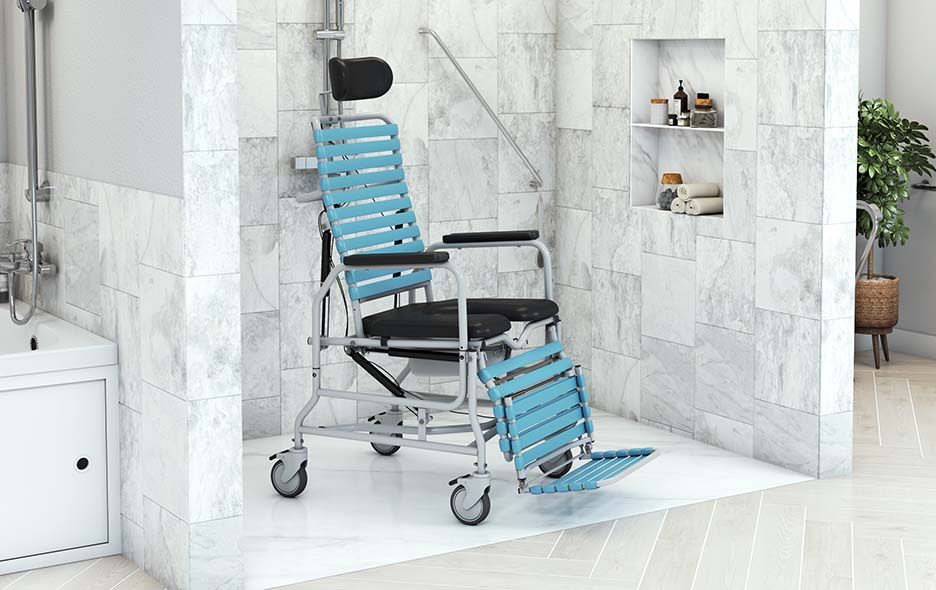
Wheelchairs to Avoid in Long-Term Care
Choosing the wrong wheelchair can lead to discomfort, poor posture, and serious health risks. It’s just as important to know what to avoid as it is to know what to look for.
Basic Folding Wheelchairs
Standard, one-size-fits-all folding wheelchairs are often issued at admission to a long-term care facility, but they are not suitable for residents who require a wheelchair to get out of bed each day. These basic models lack the necessary postural support for prolonged use and can contribute to skin breakdown, postural abnormalities, and fall risks. Their sling-style seats and backs offer minimal structure, often leading to a slumped, uncomfortable posture that can cause chronic pain and even respiratory difficulties. Instead, choose a wheelchair built for ergonomic posture and all-day comfort.
Tall-Back Recliners
While they may seem comfortable at first glance, many tall-back recliners pose significant risks. These chairs often encourage poor posture by allowing the resident to slide forward into a sacral sitting position. This posture places immense pressure on the sacrum and coccyx, dramatically increasing the risk of developing painful and dangerous pressure injuries. As the resident slides, they also increase fall risk.
Surfaces that Hammock or Sag
Any seating surface that sags or “hammocks” over time is a red flag. This lack of a firm foundation leads to improper weight distribution and poor pelvic positioning. When the pelvis is not stable, the resident’s entire posture is compromised, contributing to discomfort and an elevated risk of skin breakdown. Always choose wheelchairs with supportive seating surfaces that maintain their shape.
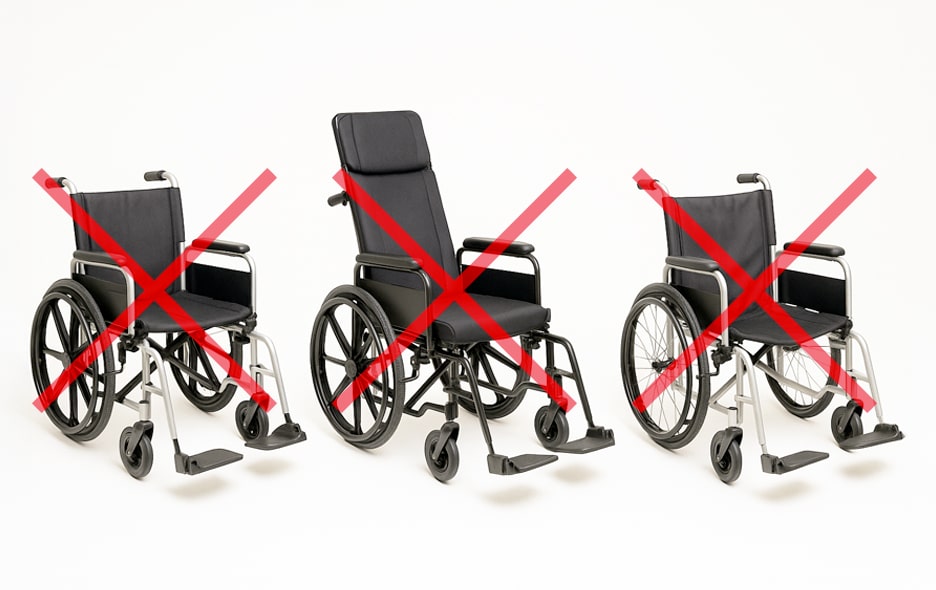
Top Wheelchair Recommendations from Broda
Broda is a trusted manufacturer of durable medical equipment for any care environment. We offer a large selection of chair products designed to deliver the highest standard of comfort, safety, and functionality. Our goal is to promote and preserve the well-being of the people who use our products.
Here are three exceptional wheelchairs that are perfect for long-term care:
Best Positioning Wheelchair for Long-Term Care
The Synthesis Positioning Wheelchair is the ultimate solution for residents needing advanced postural support. It is expertly designed with our signature Comfort Tension Seating®, which conforms to the body to provide superior pressure redistribution and airflow.
With up to 40° of infinitely adjustable seat tilt and up to 90° of back recline, the Synthesis allows caregivers to create a custom-fit seating experience for each individual. This adaptability is crucial for preventing pressure injuries, managing pain, and improving overall comfort for residents with complex needs. It is an investment in compassionate, preventative care.
Best Mobility Wheelchair for Long-Term Care
For residents who are able to self-propel, the Encore Pedal Wheelchair offers a pathway to greater independence. Its low seat-to-floor height is specifically designed to facilitate foot propulsion, or “pedaling,” allowing residents to move freely and safely. This feature encourages mobility and engagement, which are vital for physical and cognitive health.
The Encore Pedal Wheelchair doesn’t sacrifice support for mobility. It also features up to 40º of adjustable, front-pivot seat tilt to provide periods of rest and pressure relief when needed. It’s the perfect blend of freedom and safety, built to enhance a resident’s daily life.
Best Shower Chair for Long-Term Care
The Revive Shower Commode transforms bathing from a challenge into a safe and comfortable routine. The Revive is built with a stainless-steel frame that resists rust and corrosion, ensuring long-lasting durability. It comes standard with our Comfort Tension Seating® to provide immersive support during hygiene tasks.
Featuring up to 12° of posterior tilt, 10° of anterior tilt, and up to 67° of back recline, the Revive provides outstanding positioning capabilities for enhanced safety and caregiver access. This shower chair is designed to give both residents and caregivers peace of mind.
Make the Right Choice for Superior Care
Selecting the right wheelchair is a foundational element of excellent long-term care. By focusing on specialized equipment like positioning wheelchairs, mobility wheelchairs, and professional shower commodes, you can significantly improve the health, comfort, and happiness of your residents. Avoid inadequate models and instead, trust in solutions designed for the unique demands of long-term care.
The best long-term care wheelchairs are built for comfort, safety, and longevity. Explore our large selection of chair products to find the right fit for you. For over 40 years, long-term care professionals have trusted Broda to provide the quality their residents deserve.

